You’ve decided that increasing your protein intake is probably a good idea. So, you’ve purchased a carton or bag of whey or plant-based protein powder. Then, you’ve added a scoop to some smoothie recipes and maybe even stirred some into coffee or yogurt — that’s a great start!
But if you’re like me … Well, I got pretty tired of protein powder after a few months of basic smoothie recipes.
Fortunately, our team of registered dietitians has been using protein powder and collagen to boost our protein intake in many-a-meal and recipe over the years! The boredom I experienced with plain old protein powder smoothies has led us down a pretty fun path of creating tons of new protein powder recipes.
(Oh, and if you’re having trouble incorporating your powder into recipes, I share a few baking tips at the bottom of this post to help explain the issues I ran into while testing many of my creations.)
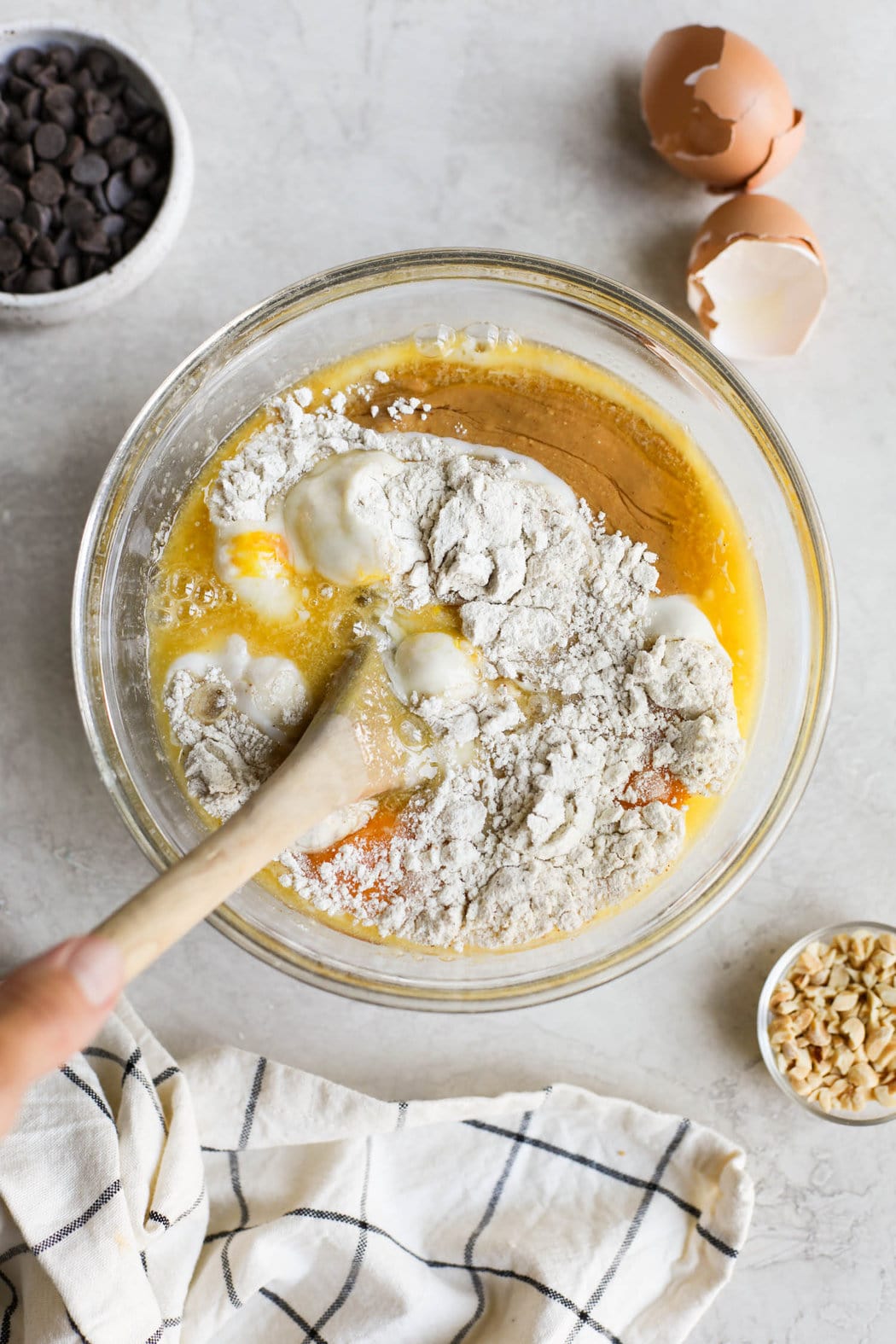
Protein Bars
Purchased protein bars are a convenient option to throw in a purse or gym bag. But you can easily make less processed protein bars at home and save some money, too! (Plus, I’m always hesitant to buy most protein bars, as they’re often filled with extra ingredients and additives I don’t want my family eating.)
Here’s my rule of thumb that has worked over tons of my protein bar recipes: To add protein powder to a protein bar recipe, replace ½ to ¾ cup of the dry ingredients with an equal amount of a favorite protein powder. This works for both baked protein bar recipes and no-bake protein bars.
Here are some that we’ve made over the years that are still mainstays for my meal prep rotation.
Mini No-Bake Protein Bars
At least one of the members of our team makes this recipe every single week. It’s one of our collective favorite sweet treats for a midday boost or post-workout snack. And we love that this no-bake recipe comes together so quickly — we’ve got it down to about 15 minutes (we’ve literally made these hundreds of times). The bars have a nice crunchy texture from the addition of crisp rice cereal, plus a protein boost from flax meal, peanut butter, and vanilla protein powder.
Protein per mini bar: 7 grams
Dairy free | Egg free | Gluten free | Vegetarian
Vegan Protein Bars
Looking for a vegan protein snack? These bars were created by Ana, one of our team members who doesn’t eat dairy, and they’re boosted with plant-based protein powder. Made from all simple ingredients, like nut butter, maple syrup, banana, flax, and quick-cooking oats, these homemade protein bars can help you get enough protein in your day.
Protein per bar: 10 grams
Dairy free | Egg free | Gluten free | Vegan
5-Ingredient Peanut Butter Granola Bars
These popular homemade granola bars feature naturally protein-rich ingredients like nut butter and eggs. You can increase the protein even more by stirring in a few tablespoons of chia seeds or chopped nuts. This recipe also works well when you add protein powder to it. To do so, replace ½ cup of the rolled oats with ½ cup of protein powder (both vanilla and chocolate protein powder taste great in this one). This increases the protein per bar by 35% (from 6 to 10 grams of protein).
Protein per bar (with protein powder added): 10 grams
Dairy free | Gluten free | Vegetarian
Energy Balls
One of our all-time favorite healthy snacks to make and share are energy ball recipes. Every one of these we create is loaded with energy-supplying healthful carbohydrates, fiber, healthy fats, and protein.
To add protein powder to an energy balls recipe, replace a portion of the rolled oats (not all of the oats) with protein powder. The proportions can get tricky, so here’s what we’ve found works best to keep the balls sticking together and the texture similar:
- In recipes that call for 2 or more cups of oats, replace ½ cup oats with ½ cup protein powder.
- In recipes that call for less than 2 cups of oats, replace ¼ cup oats with ¼ cup protein powder.
Here are some of our recipes to try:
Monster Cookie Protein Balls
If you’ve got a sweet tooth, you’re going to love these dietitian-approved protein balls that taste just like a monster cookie dough, but with added protein, fiber-rich carbs, and built-in perfect portions! My little kids even love them — don’t tell them I said this, but they clearly have no clue how healthy these are. They think of these as just … well, cookie dough treats! This recipe calls for a scoop of protein powder (¼ cup), which folds in nicely and doesn’t leave a gritty texture.
Protein per ball: 5 grams
Egg free | Gluten free | Vegetarian
Pumpkin Spice Protein Balls
Our pumpkin protein balls also supply 5 grams of protein per ball in a nice little grab-and-go snack portion. We love to keep a batch in the fridge or freezer for easy additions to healthy breakfasts and lunches. I find it’s a nice way to get a pumpkin treat in the fall to stave off the cravings for sugar-loaded PSLs, if you catch my drift.
Protein per ball: 5 grams
Egg free | Gluten free | Vegetarian
3-Ingredient Vegan Energy Balls
This recipe is as simple and quick as it gets! It’s made from just rolled oats, nut butter, and honey. For a boost of protein, you can replace ¼ cup of the oats with ¼ cup of plant-based protein powder (or whey protein or collagen peptides), which boosts the protein count per ball from 3 to 5 grams.
Protein per ball (with protein powder added): 5 grams
Dairy free | Egg free | Gluten free | Vegan
Pancakes, Waffles, and Muffins
Get a high-protein breakfast by adding protein powder to pancake, waffle, and muffin recipes. Believe it or not, you can eat all of these things without overloading your body with sugar! (Pancakes and waffles, in particular, are some of my favorites to test with healthier ingredients and this protein-packed waffle recipe is a winner in my book.)
To add protein powder to pancake, muffin, and waffle batter, replace a portion of the flour with protein powder. Just like with energy balls, be cautious with proportions:
- In recipes that call for 2 or more cups of flour, replace ½ cup flour with ½ cup protein powder.
- In recipes that call for less than 2 cups of flour, replace ¼ cup flour with ¼ cup protein powder.
Try these:
Peanut butter Protein Muffins
These tender muffins contain 9 grams of high-quality protein from the additions of Greek yogurt, peanut butter, and one of our team’s favorite whey protein powders, Puori Whey Protein. If you’d like, stud them with chocolate chips and chopped peanuts for a super delicious addition to breakfast (that’s how I like them best).
Protein per muffin: 9 grams
Gluten free option | Vegetarian
Pumpkin Protein Muffins
We’re obsessed with this recipe — and not only during fall pumpkin spice season! I developed it to mimic Starbucks pumpkin bread, but with less sugar, more protein, and in convenient muffin form! The result is tender muffins that contain real pumpkin, eggs, and whey protein. Plus, you can easily make them gluten-free, if needed.
Protein per muffin: 7 grams
Gluten free option | Nut free | Vegetarian
The Best Protein Pancakes Recipe
You can make these protein pancakes to order, or cook and freeze an entire batch of them for easy meal prep breakfasts down the road. They reheat great! With the addition of protein powder, this pancake batter cooks into tender, perfectly browned pancakes that you can serve with any favorite toppings.
Protein per 2 pancakes: 12 grams
Dairy free | Gluten free option | Nut free | Vegetarian
Cookies
Whether it’s a breakfast cookie you can make ahead for easier mornings or a typical snack cookie, cookie dough often bakes up nicely with the addition of protein powder. And don’t get me started on how good these are when paired with ice cream!
My rule of thumb: To add protein powder to a cookie dough, replace ½ cup of the dry ingredients with an equal amount of a favorite protein powder.
Here are some protein-boosted cookie recipes to try:
Chai Spice Protein Breakfast Cookies
This recipe was created to capture those warming and delicious spices of my favorite hot chai tea — now in breakfast cookie form! These make-ahead large cookies are high in protein and are a great solution for getting a healthy breakfast on busy mornings.
Protein per large cookie: 15 grams
Gluten free | Vegetarian
Chocolate Peanut Butter Protein Cookies
When Dietitian Stacie gets a craving for that popular duo — chocolate and peanut butter — she whips up a batch of these favorite grain-free cookies. Made with almond flour, collagen peptides, peanut butter, cocoa powder, and eggs, the wet batter bakes into low-carb cookies that are so tender with just the right amount of sweetness.
Protein per cookie: 7 grams
Dairy free | Gluten free | Grain free
Oats and Puddings
You can easily stir a scoop of protein powder into your next bowl of oatmeal or use it to boost breakfast recipes like overnight oats, baked oatmeal, and chia pudding.
Typically, ¼ cup to ⅓ cup of protein powder or collagen peptides can be added to a single serving of oatmeal, overnight oats, and chia pudding without needing to reduce any other ingredients. For baked oatmeal recipes, reduce the oats by ½ cup and stir in ½ cup protein powder.
Use these recipes as inspiration:
Protein Overnight Oats
Jess fuels her busiest mornings with these protein overnight oats. Each serving provides 30 grams of protein and 9 grams of fiber. This easy base recipe is great for meal prep and can be customized with various mix-ins and toppings, such as fruit, nut butter, and more.
Protein per serving: 30 grams
Gluten free, Nut free, Vegetarian
Baked Vanilla Protein Oatmeal
This vanilla-baked oatmeal is one of our favorite forms of “proats”! It can be baked into servings that are eaten with a fork (topped with Greek yogurt, a drizzle of nut butter, and fresh fruit), cut into handheld bars, or even baked into muffins. Make it with either whey protein powder or plant-based protein powder as a base for any mix-ins or toppings you want to add!
Protein per serving: 14 grams
Gluten free | Nut free | Vegetarian
Peanut Butter Banana Overnight Oats
When I’ve got an overripe frozen banana stashed, I love to make this quick recipe for overnight oats. It’s an easy make-ahead breakfast that provides fiber and healthy fats. I often stir in 1 scoop (¼ cup) of vanilla or chocolate protein powder to increase the protein even more — to 20 grams per serving!
Protein per serving (with protein powder added): 20 grams
Egg free | Gluten free | Vegetarian
Banana Chocolate Chip Baked Oatmeal
This recipe (and, really, any baked oatmeal recipe) is a natural one for adding protein powder. To do so, replace ½ cup of the rolled oats with ½ cup of protein powder and bake the recipe as written. Doing so almost doubles the amount of protein you get in a serving.
Protein per serving (with protein powder added): 11 grams
Dairy free | Gluten free | Vegetarian
Mixed Berry Protein Chia Pudding
Chia pudding is an awesome grain-free naturally protein rich recipe for breakfasts and snacks (chia seeds are an excellent source of plant-based protein). This version is dairy free, vegan, and boosted with collagen peptides to increase the protein even more. Plus it’s naturally sweet from frozen berries and coconut milk, so it doesn’t contain any added sugar.
Protein per serving: 10 grams
Dairy free | Gluten free | Grain free | Paleo | Vegan
Smoothies and Shakes
Shakes and smoothie recipes lend themselves well to being boosted with protein powder. When blending a single-serve smoothie, boost it with 1 scoop (typically about 30 grams) of your favorite protein powder to increase the total protein count by 18 to 25 grams.
Here are some of our favorite smoothie combos to try:
Mint Chocolate Chip Milkshake (Shamrock Shake Recipe)
You’ve never had a green smoothie as delicious as this one — it’s similar to a Shamrock Shake but contains spinach, avocado, banana, and mint. I love to stir in a scoop of vanilla or unflavored collagen peptides or vegan protein powder to more than double the protein count.
Protein per serving (with protein powder added): 15 grams
Dairy free | Gluten free | Paleo | Vegan
Pumpkin Pie Protein Smoothie
This cool and creamy smoothie tastes just like pumpkin pie with whipped cream, but it’s totally acceptable for breakfast because it’s packed with protein and healthy fats. For an added nutrient bonus, throw in a handful of spinach.
Protein per serving: 23 grams
Dairy free option | Gluten free | Paleo | Vegetarian
Sunrise Super Smoothie
If you love an orange creamsicle, then this is the smoothie for you! Made with dairy-free milk, carrots, citrus, ginger, turmeric, and protein boosted with hemp hearts and protein powder, this smoothie is packed with antioxidants, vitamin C, fiber, and beta-carotene.
Protein per serving: 20 grams
Dairy free | Gluten free | Paleo | Vegan
Banana Berry Smoothie
Dietitian Jessica (and all of us, really) loves to use collagen peptides in this smoothie to increase its nutrient support for healthy skin, hair, nails, and tendons. Made with naturally sweet berries, plus avocado, chia seeds, banana, and almond butter, this real-food smoothie is literally loaded with the good stuff.
Protein per serving: 16 grams
Dairy free | Gluten free | Paleo | Vegan
How To Use Protein Powder In Baking
To add protein powder to baked goods and no-bake treat recipes, follow this formula:
- If a recipe contains 2 or more cups of dry ingredients (meaning the total volume of flour, cocoa powder, and/or oats), then replace ½ cup of the dry ingredients with ½ cup of protein powder.
- If a recipe contains less than 2 cups of dry ingredients, you can replace ¼ cup of the dry ingredients with ¼ cup of protein powder.
Our team of dietitians has found that this is the best way to ensure a recipe will retain its texture and “stickiness” (especially for things like energy balls).
Our Fave
As a team of dietitians, we get asked almost weekly about which protein powders we recommend. We’ve put so many protein powders to the test over the years – and we’re constantly sampling new ones, too. When we try a protein powder, we’re looking at the protein source, ingredient quality, certifications and 3rd party testing, total nutrients, any sweetener used, and of course, how it tastes!
The whey protein powder our entire team loves and uses most often in these recipes is Puori Whey. We appreciate that the whey protein concentrate comes from the milk of pasture raised cows, and a single 30-gram scoop provides 21 grams of protein and a complete amino acid profile.
We also love that this one doesn’t contain any low-calorie sweeteners, which often leave a bad aftertaste, especially in baked goods. Instead, Puori is sweetened with just a very small amount of organic coconut sugar.
It’s also awesome to know that Puori has received Best-in-Class certifications from the Clean Label Project, a national nonprofit with the mission to bring truth and transparency to food and consumer product labeling. You can try Puori and get 20% off your first order (or 15% off subscriptions) with PUORIxRFD.
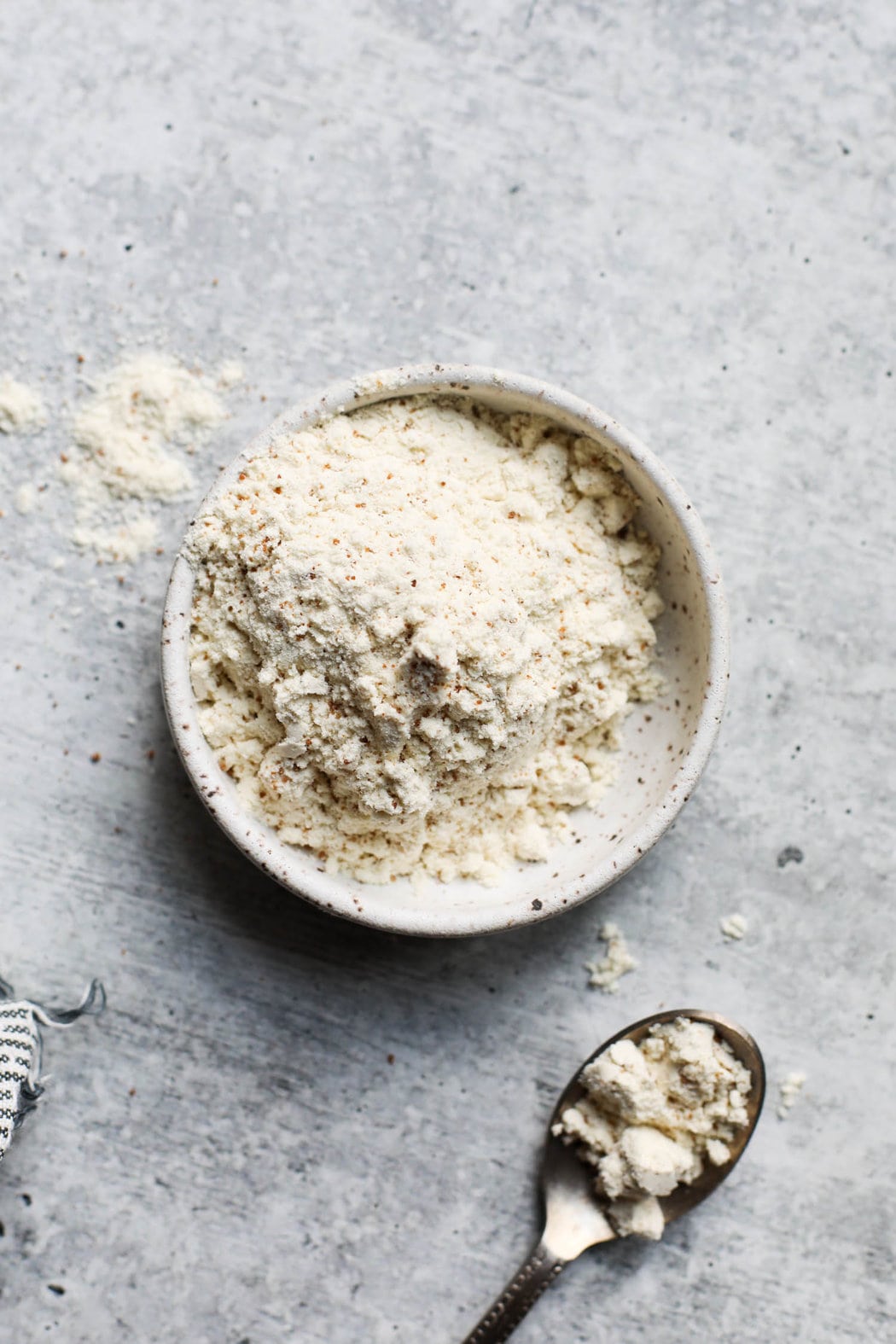
Frequently Asked Questions
The most common mistake when adding protein powder to a recipe is that you add too much protein powder, which results in a gritty texture. The recipe will probably get too crumbly and won’t hold together.
Also, think of the flavor profile you’re going for so you don’t create any off-tasting treats. If vanilla or chocolate flavors would taste good in the recipe, use vanilla or chocolate protein powder. Unflavored protein powders and collagen peptides are available and may be more appropriate for the flavor profile of certain recipes.
(And try not to use fruity protein powders where unflavored is the best fit. I did this in a pinch once, and … let’s just say, it did not turn out well!)
Protein powder makes a great addition to many breakfast recipes and baked goods. You can stir 1 to 2 scoops (¼ cup to ½ cup) of your favorite powder into pancake and waffle batter, oatmeal, baked oats, overnight oats, breakfast cookies, and muffin batter. Doing so increases the protein amount per serving by 30% to 50%.
Adding protein powder to recipes, without making any other alterations to your diet, will not necessarily result in weight loss. In fact, it could increase weight by adding more calories to an otherwise unchanged intake of nutrients.
However, boosting protein in smoothies and other recipes, while also increasing fiber intake, can help you feel more full from meals and result in smaller portions, fewer food cravings, and less mindless snacking over the day. If that’s the case, and you’re also eating fewer added sugars throughout the day while increasing protein intake, then protein powder can be a beneficial addition to a weight loss plan.
For ultimate success, we highly recommend reading the tips in the full blog post above. All photos and content are copyright protected. Please do not use our photos without prior written permission. If you wish to republish a recipe, please rewrite the recipe in your own unique words. Link back to the source recipe here on The Real Food Dietitians. Thank you!
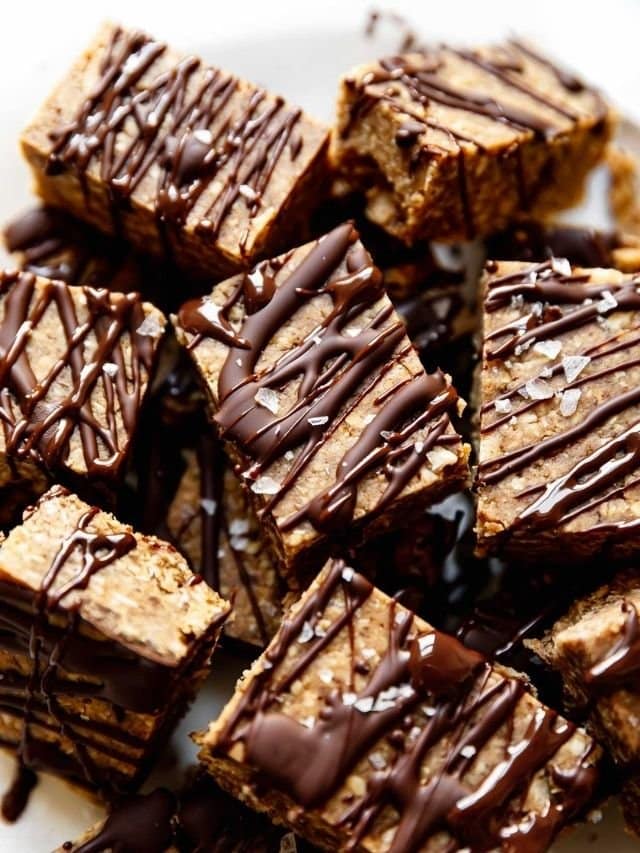
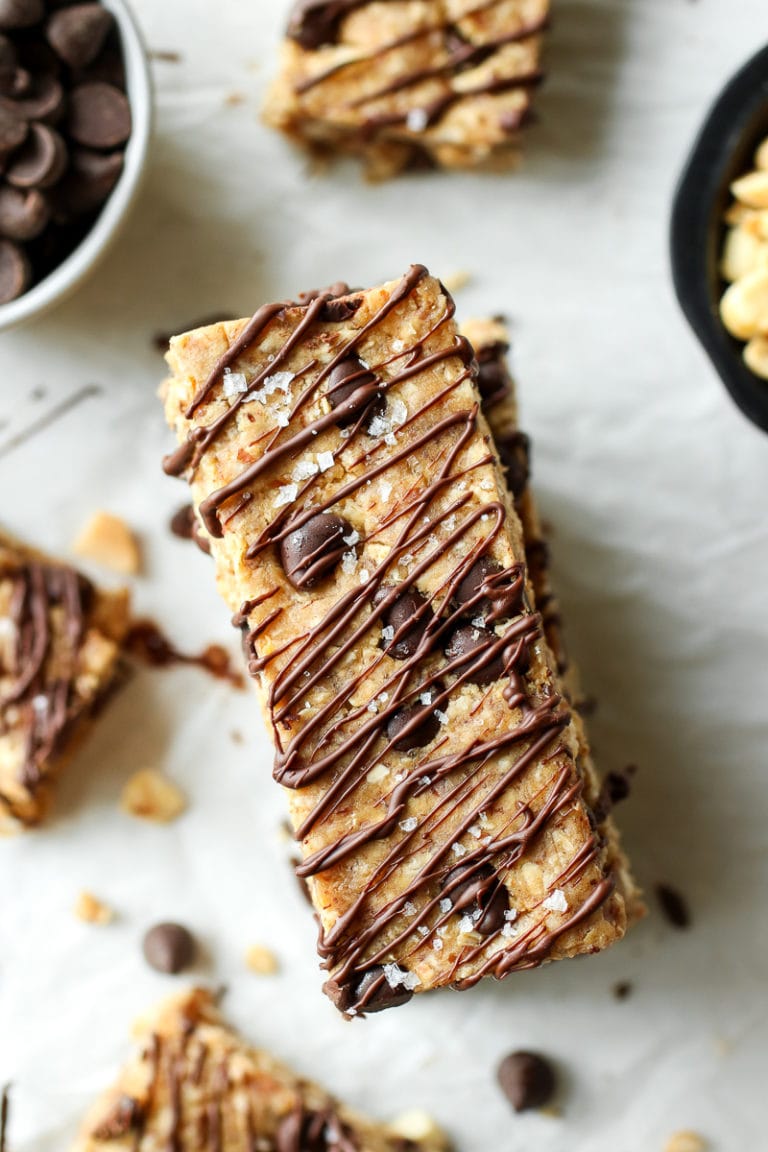
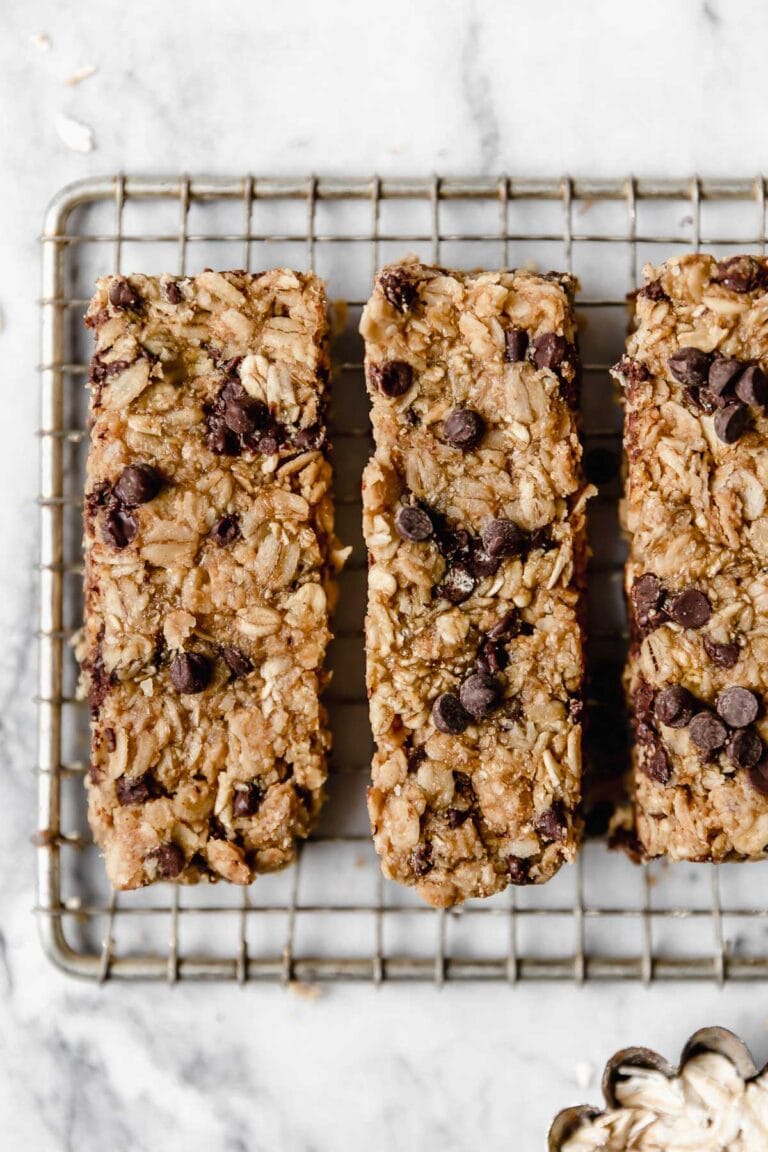
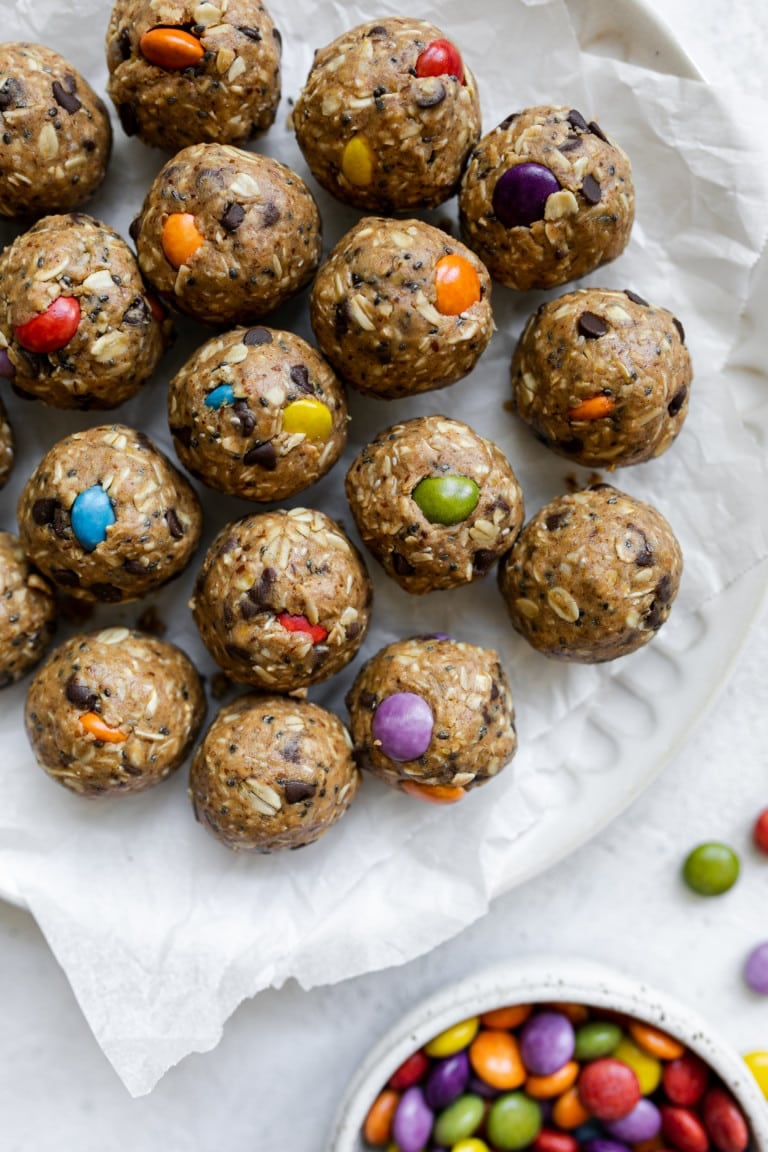
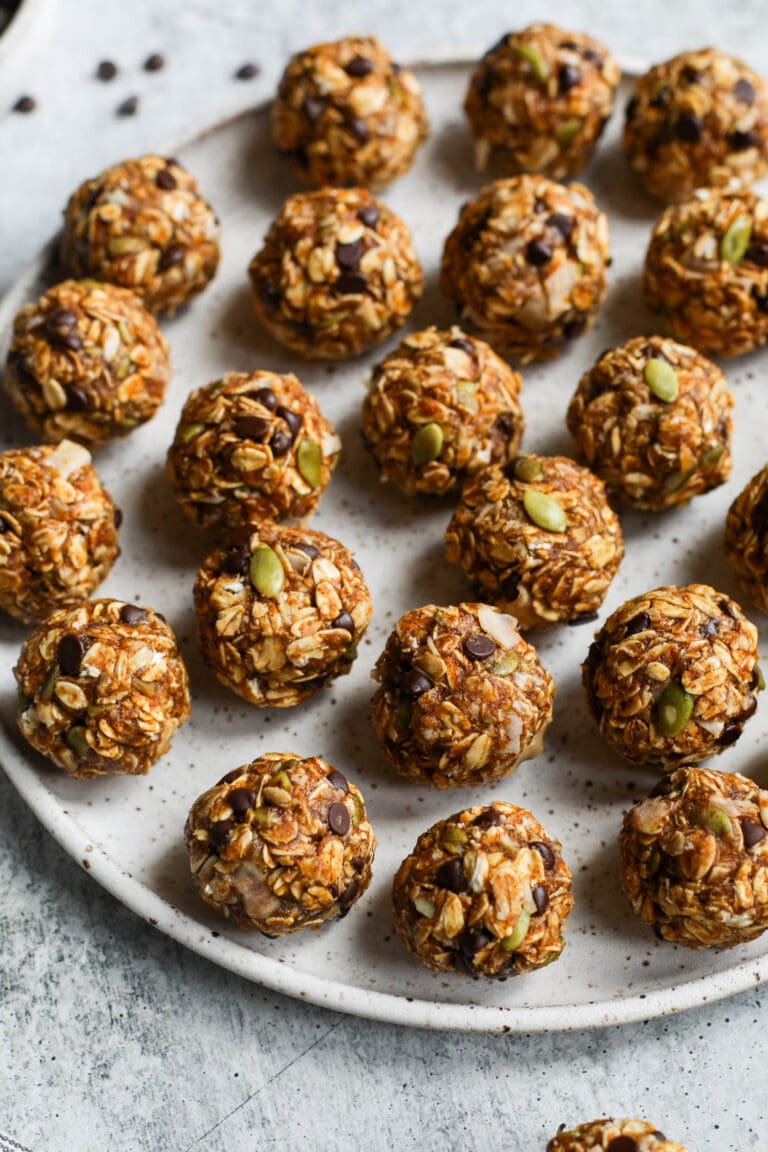
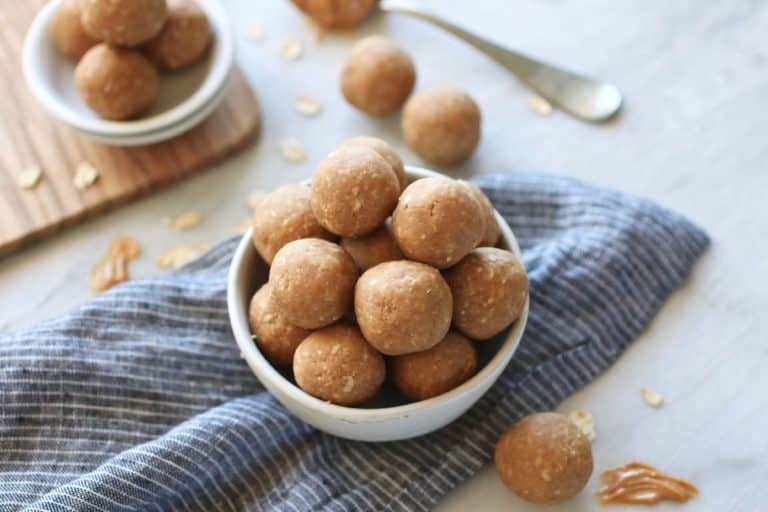
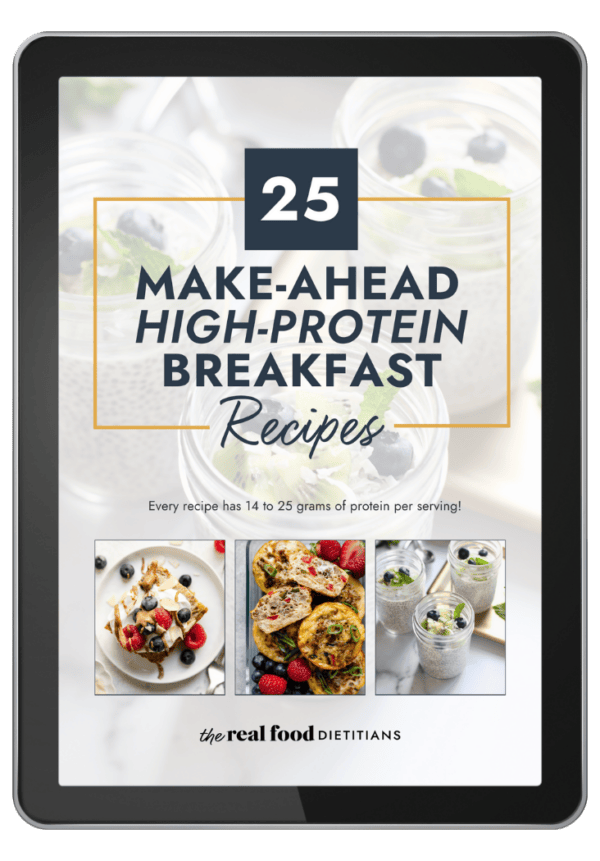
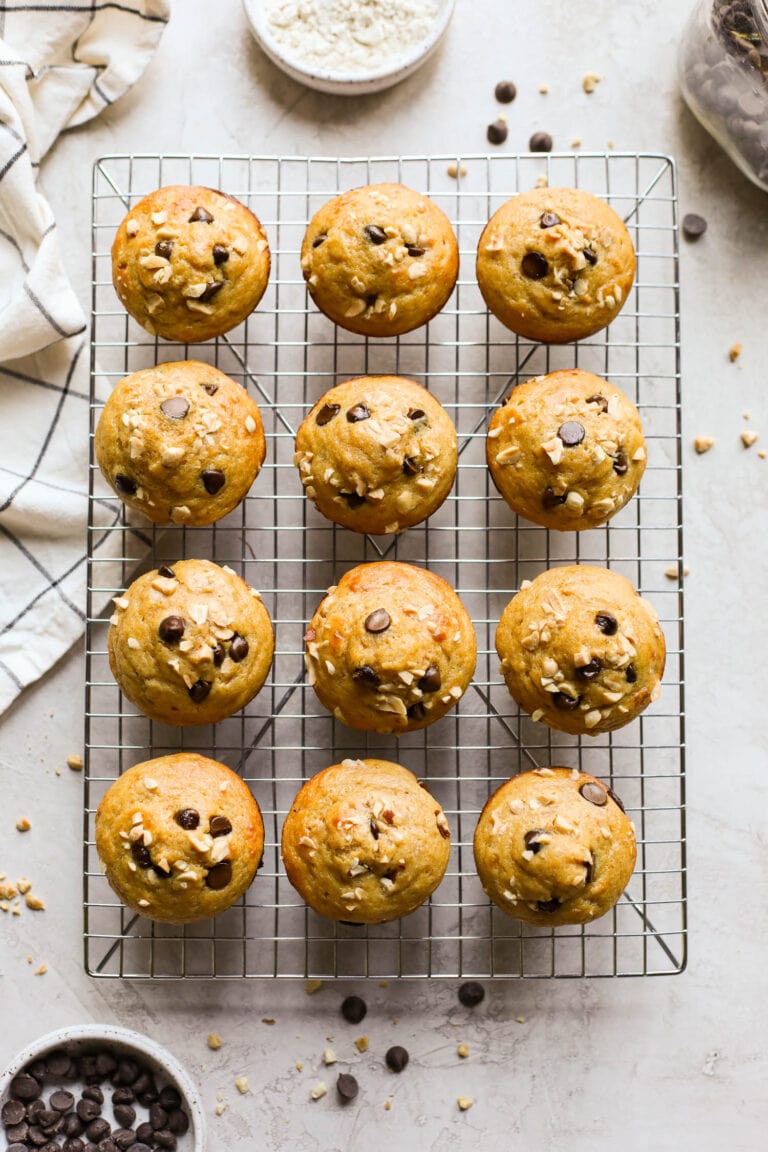
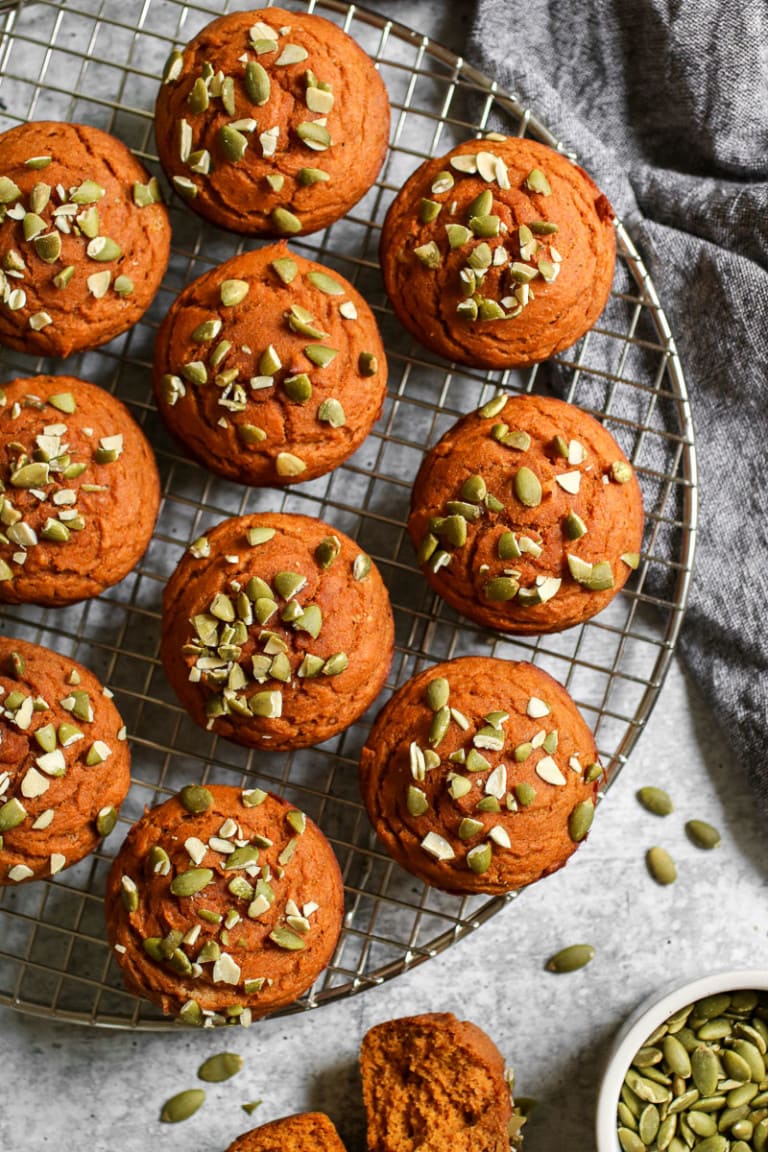
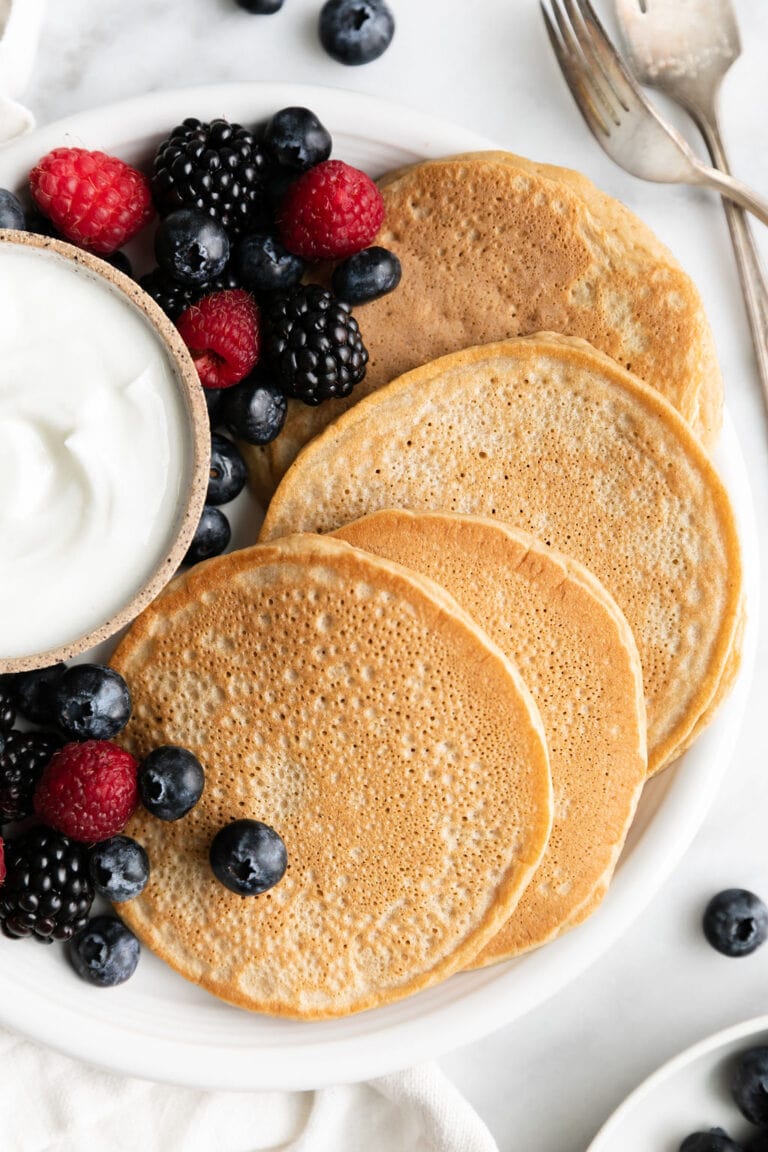
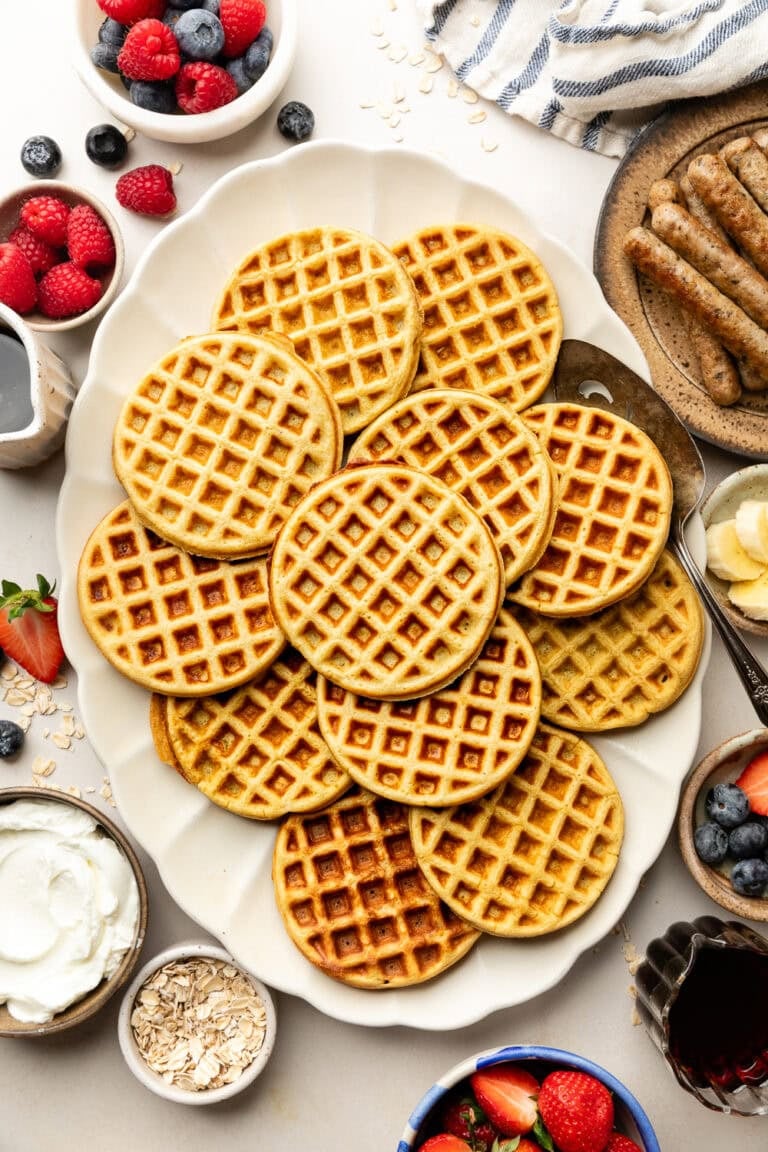
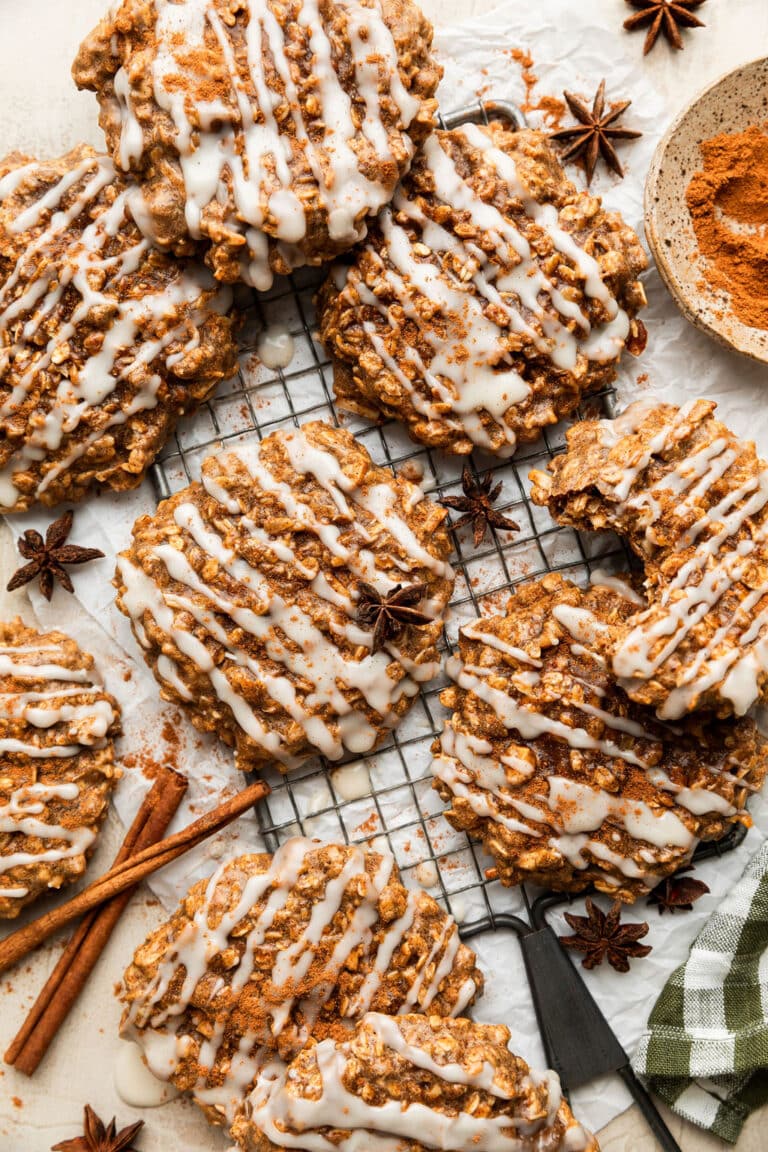
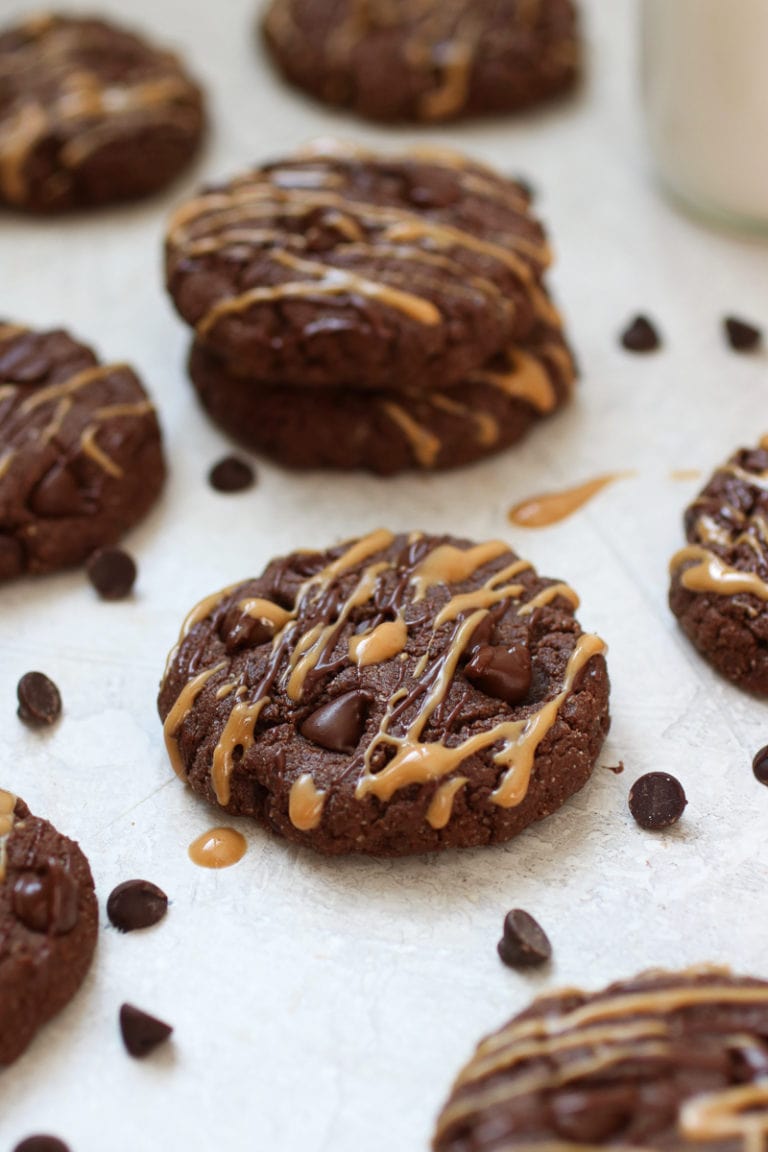
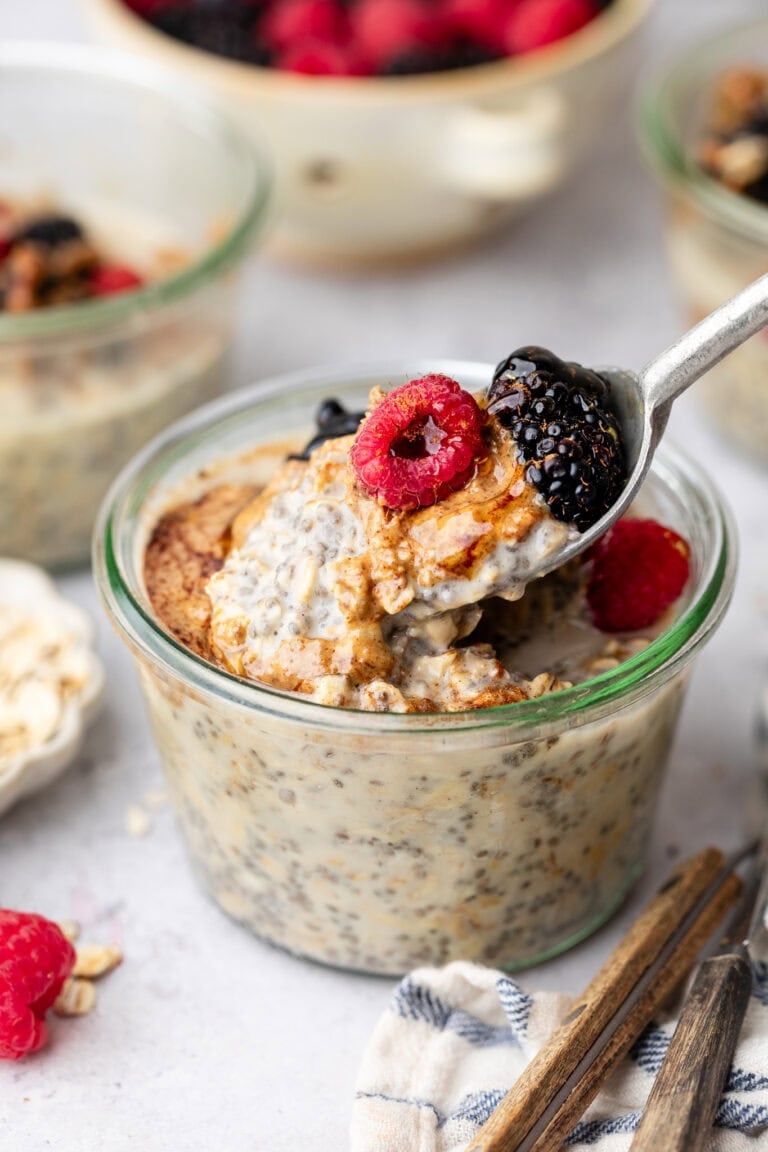
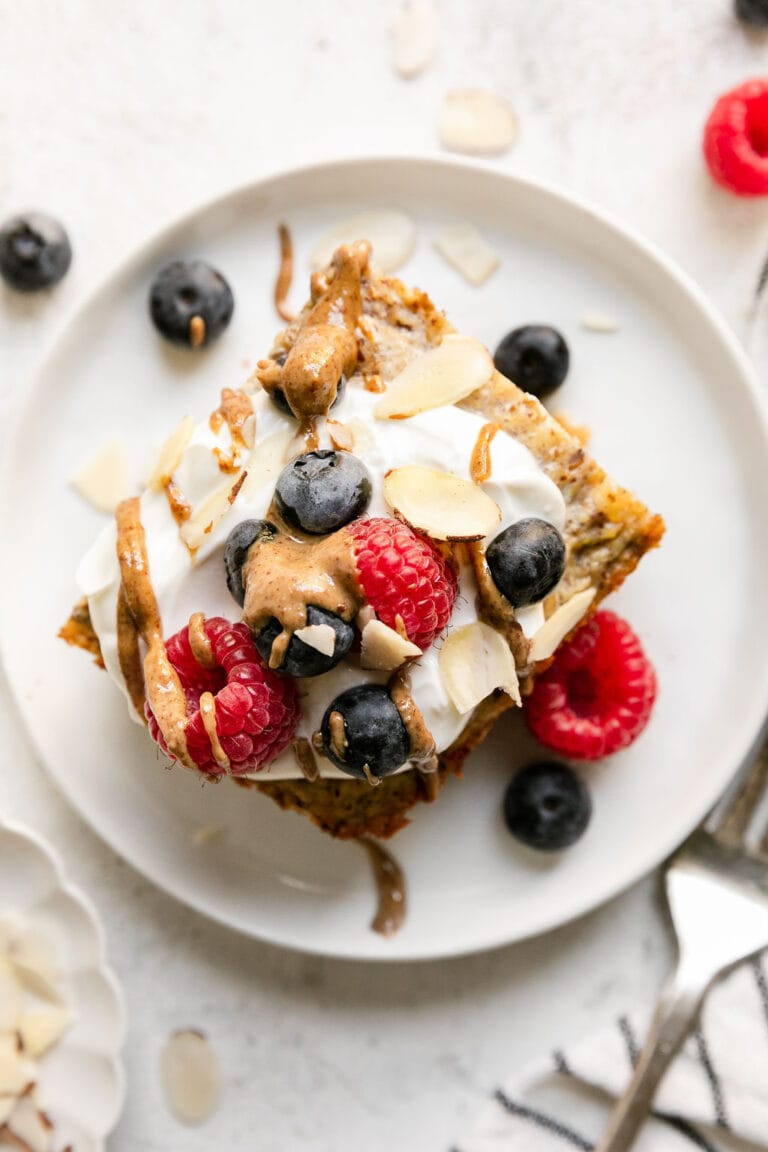
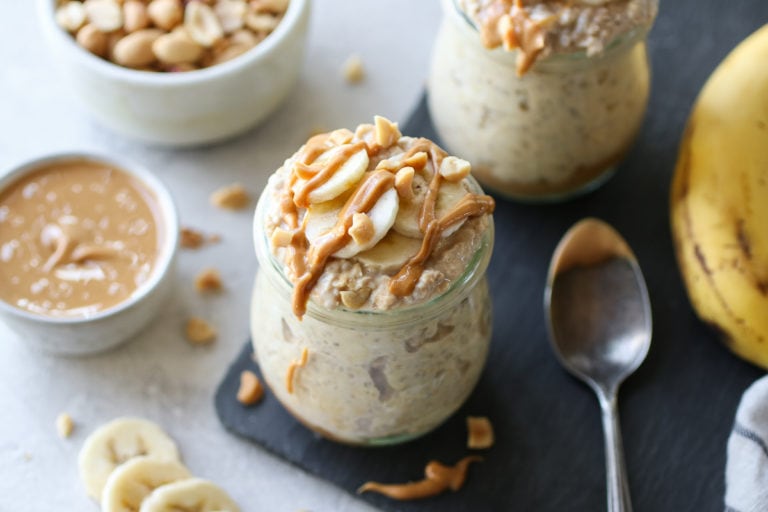
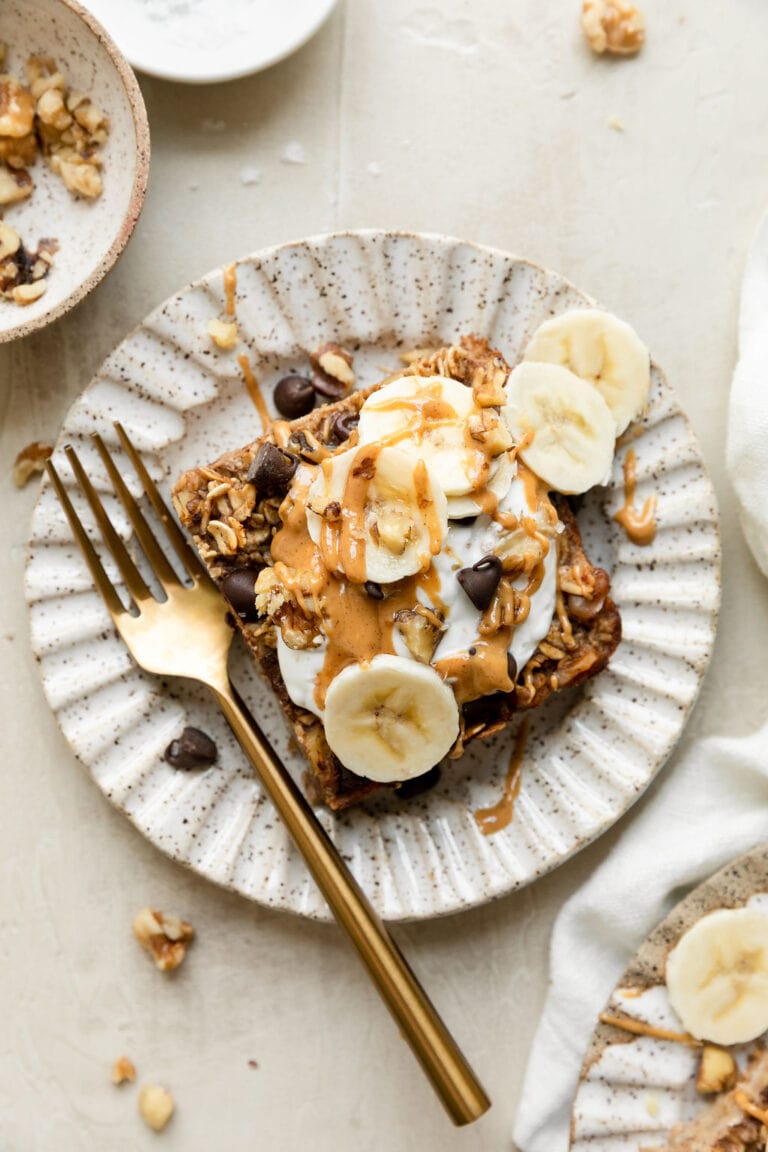
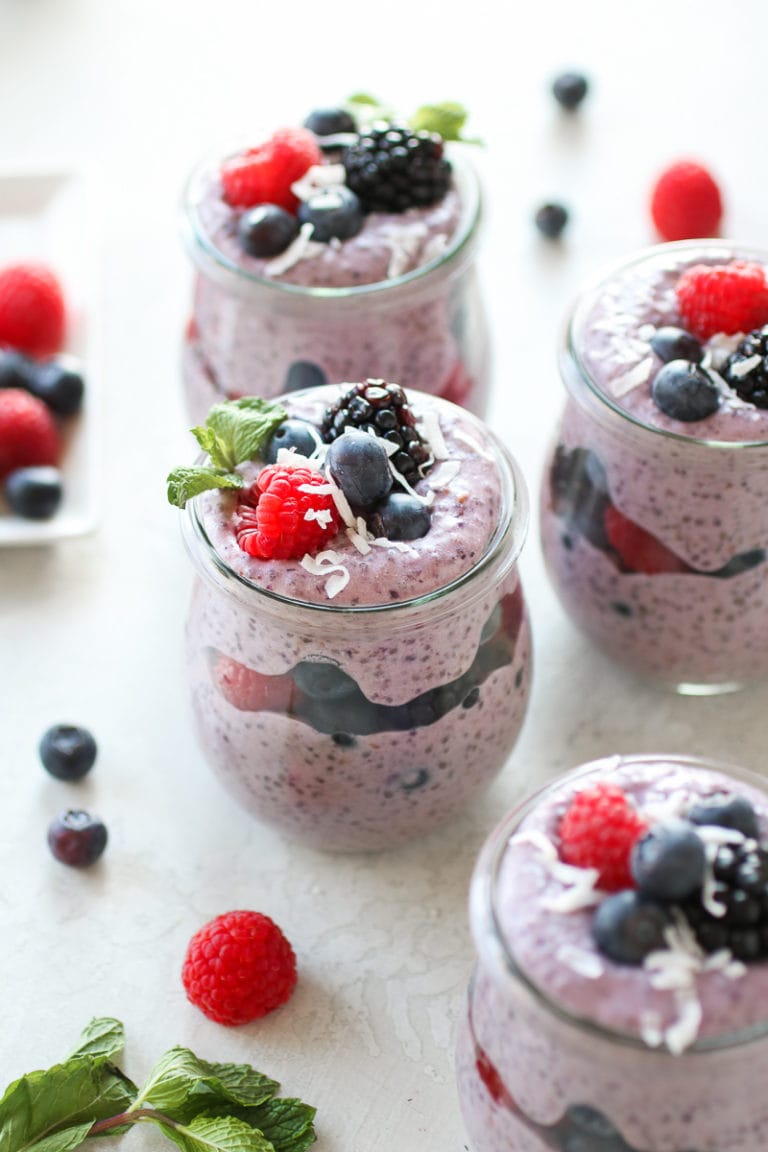
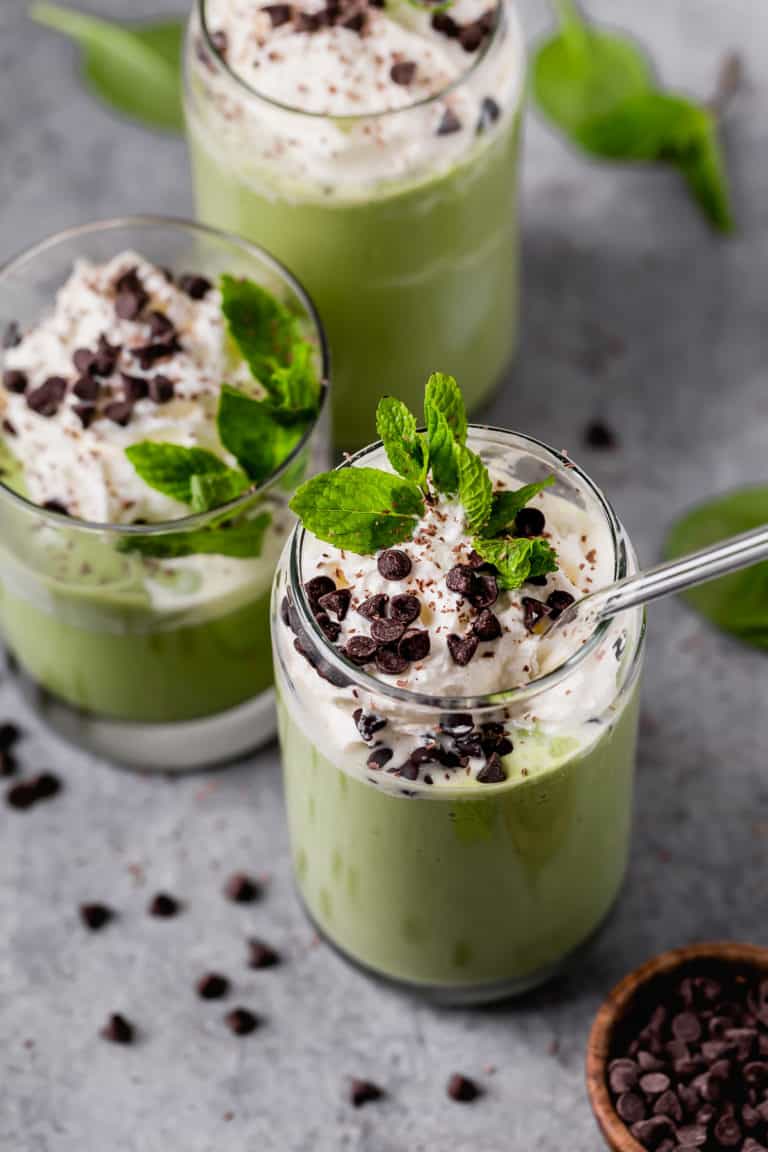
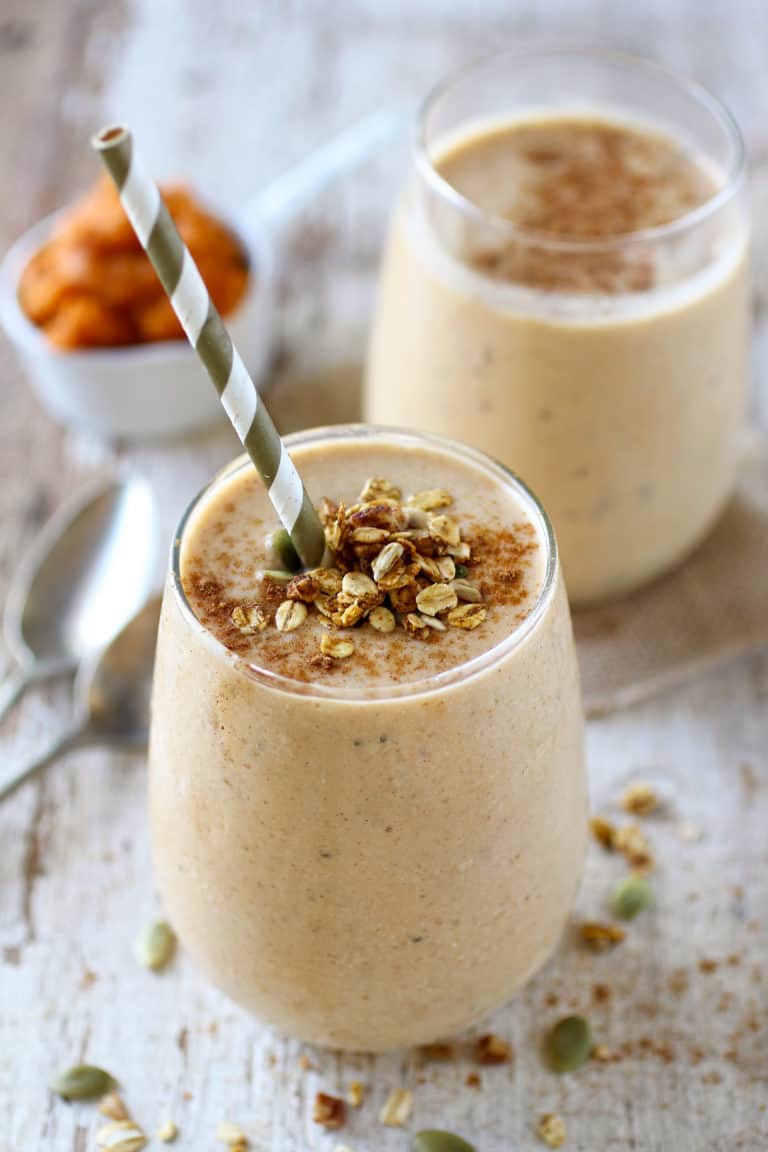
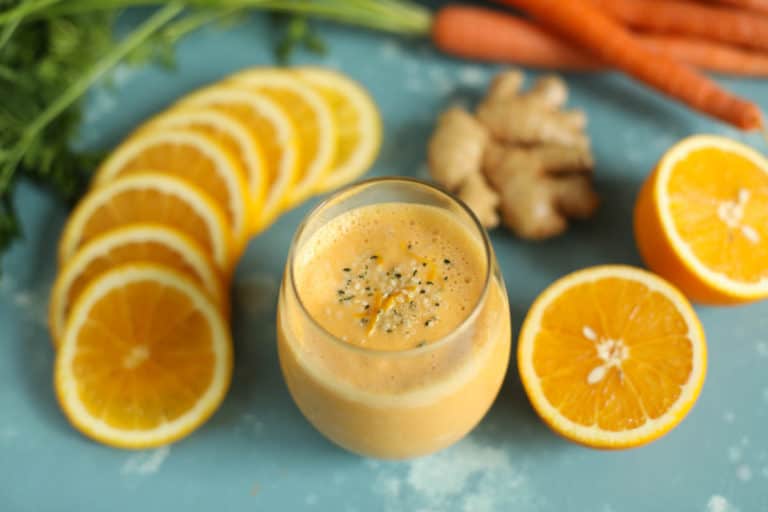
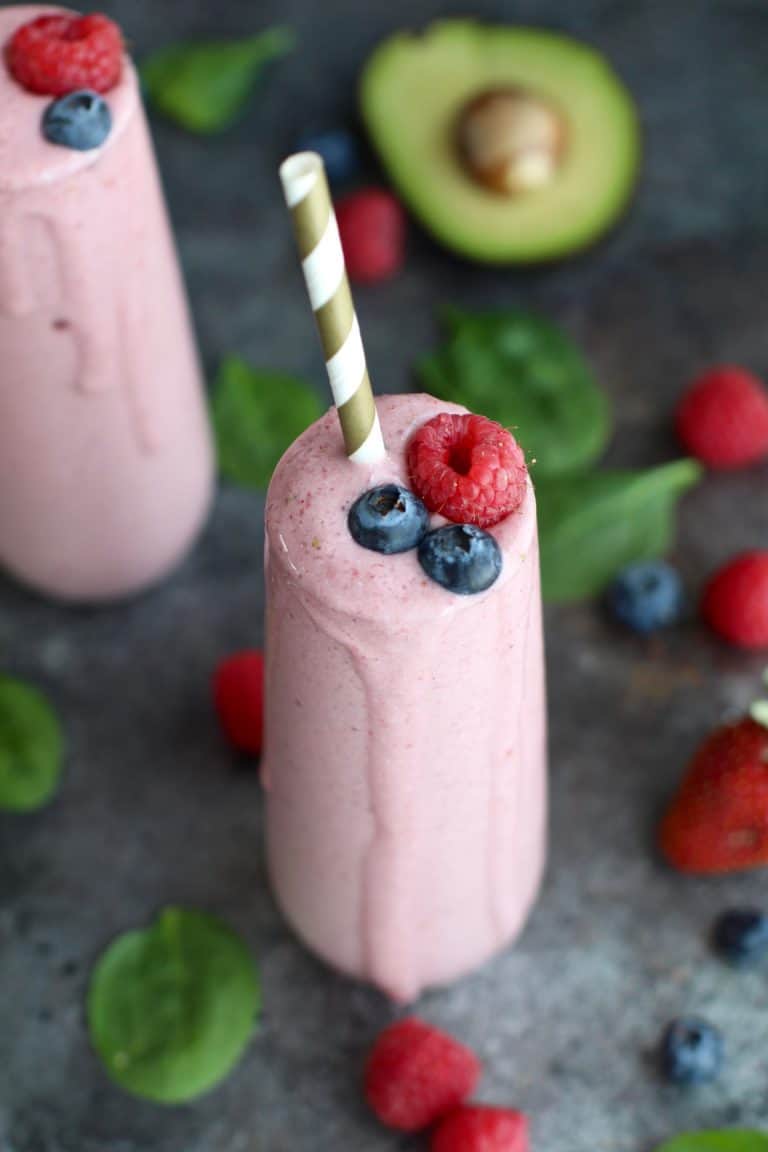
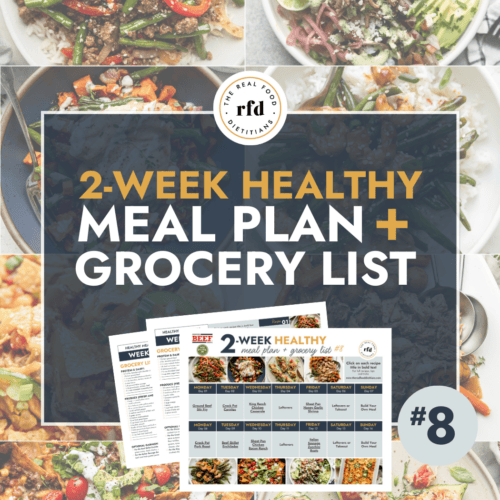
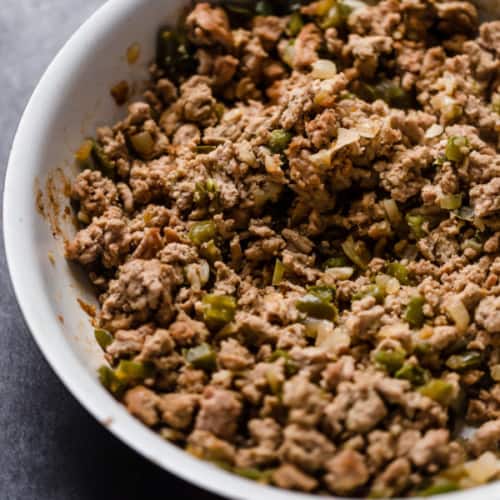
Can I use collagen peptides for the protein powder? Thank you for the great information and recipes!
Hi Lucy! We’re so glad you found this information helpful! While collagen isn’t a complete protein, it is something that we use to help increase our protein intake, in addition to eating real-food protein and using protein powder. I’d say that, as a team, we most often use protein powder in recipes and use collagen more for a collagen-specific boost to coffee or other liquids. Collagen peptides will work great in place of the protein powder in most of these recipes, like the smoothies, chia pudding, energy bites, and overnight oats, but we don’t recommend using them in the baked recipes, such as the baked oatmeals. I hope this helps!
Please clarify Re: “To add protein powder to pancake, muffin, and waffle batter, replace a portion of the flour with protein powder. Just like with energy balls, be cautious with proportions:
In recipes that call for 2 or more cups of flour, replace ½ cup oats with ½ cup protein powder.
In recipes that call for less than 2 cups of flour, replace ¼ cup oats with ¼ cup protein powder.”
Do you mean replace 1/2 cup of flour?
Hello, yes that is correct! I’ve updated the post so it says flour instead of oats, but the same formula applies!
Learned the hard way to not mix whey powder protein with a hot liquid. Thanks for all these wonderful tips for baking.
Yeah, some brands will curdle or clump which isn’t pleasant. We’re glad these tips are helpful!